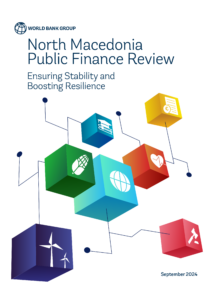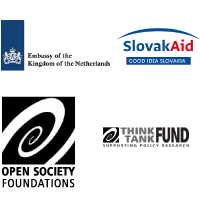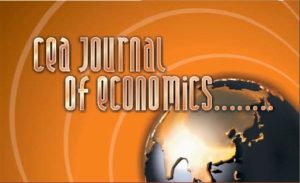A team of experts, led by CEA within the auspices of the Project Assessing & Streamlining the Potentials of the Open Balkan Initiative prepared 3 Studies:
Rationale:
The point with the TASK 2 is that each of the WB6 countries have its own characteristics thus, there are disparities within and among the countries but also similarities. That is why we want to analyze the disparities and similarities at EU’s NUTS 3 regions depending on the data available. The idea is that given the OBI MoUs and the OBI Agreements and the EU’s freedom of movements some NUTS regions of the WB6 countries might have more similarities among themselves than the others. Thus, those NUTS 3 regions that are clustering e.g., are showing similarities in some demographic attributes and/or some socio-economic attributes might be a platform for more efficient implementation of the EU’s freedom of movements and the objectives of the OBI MoUs and OBI Agreements. This does not mean that the regions that are with more disparities cannot achieve the same objectives. It just demonstrates that for more similar regions the policies might be implemented more efficiently as they have similar challenges. Those regions that show larger disparities will probably need more resources to reach convergence and less inequalities.
There are three Volumes of this Task 2 report:
Volume 1: Country disparity analyses: Desk research
In Volume 1 we find that there is internal migration to the urban centres that attracts population. The concentration of the population in the WB6 countries is found in municipalities with a population of up to 30,000, e.g., in 69% of total population of all 491 municipalities. In Albania half the population live in 7 cities with a population of more than 100,000 and in Kosovo, similar to Albania, half the population lives in 8 of the 38 municipalities. In Montenegro, 23 of the 25 municipalities have a population of up to 50,000 (half the population lives in 4 of the 25 municipalities). In B&H, half the population lives in 84% of the municipalities. Regional development is organised on the NUTS 3 level for planning purposes in North Macedonia, Albania and Kosovo where disparities have persisted for a decade. In Serbia, NUTS 3 is used for the purpose of administrative deconcentration, while for development purposes there are four regions.
Link to Volume 1: Country disparity analyses: Desk research
Volume 2: Analysis of the territorial challenges, needs and potential of the six Western Balkan countries: An economic view
The WB6 countries do not trade much among themselves when measured as the top five trade partners. Serbia is prominent as an exporter to all of the WB5 countries. Albania has a high concentration of exports to Italy (of 45%) and similarly North Macedonia to Germany (47%). Serbia and Albania do not include even one WB6 country as their top five importers. Serbia’s exports and imports are basically equal to the sum of the other five countries.
WB6 convergence is crawling toward EU. Namely, the WB6 countries GDP per capita in PPS relative to the EU-27 rose from 33% to 38% in 10 years. With this pace it will take WB6 to reach EU average in 70 years (if EU keeps the today’s GDP level for 70 years).
The WB6 countries today are still trapped in mediocracy and becoming poorer. Worse still, the WB6 countries are at risk of becoming caught in a talent development trap (EU 2023). The ageing and shrinking working-age population (inverted age pyramid for North Macedonia for example) along with the lack of economic dynamism combined with a larger share of NEET, as well as regions experiencing the significant departure of young people, have led to a decrease in the supply of highly skilled and younger workers.
The regional inequalities within the WB6 countries reveal that on the local level (especially NUTS 3 level) the inequalities are less pronounced. This means that giving priority to addressing the regional potential of the similarities in the NUTS 3 regions over addressing convergence with the EU on the NUTS 1 level might be a more efficient policy choice for creating the opportunity for the equality of the regions’ potential, e.g., the focus could be given to economic growth that is inclusive to ensure that the benefits are spread to all regions.
Link to Volume 2: Analysis of the territorial challenges, needs and potential of the six Western Balkan countries: An economic view
Volume 3: Country disparity analyses: Cluster analysis
The similarity of regions in the Western Balkan countries was observed using cluster analysis on the NUTS 3 level of disaggregation (where data were available), navigating certain segments of Western Balkan economies using one or more indicators for each segment.
In addition, the analysis based on economic activity indicators shows a cluster in which entities show a large share of agriculture in the economy have a low GDP per capita level, as well as the low participation of other analysed sectors in GDP. On the other hand, entities with the biggest GDP per capita level overall, as observed in the capital cities of Serbia, North Macedonia and Albania, as well as Montenegro as a whole, are associated with trade, transportation and tourism’s high participation in GDP. Another cluster shows that entities in which industrial and construction activity dominate generally have an above-average level of GDP per capita. These findings may be an important consideration while devising economic policies on the regional level.
Link to Volume 3: Country disparity analyses: Cluster analysis
Observe the maps from the Cluster analysis here: Maps
Read the peer review and editor letters for the 3 studies: Peer Review & Editor Letter on Vol 1, Vol 2 & Vol 3 studies
Short version in a form of Executive summary of the three studies















